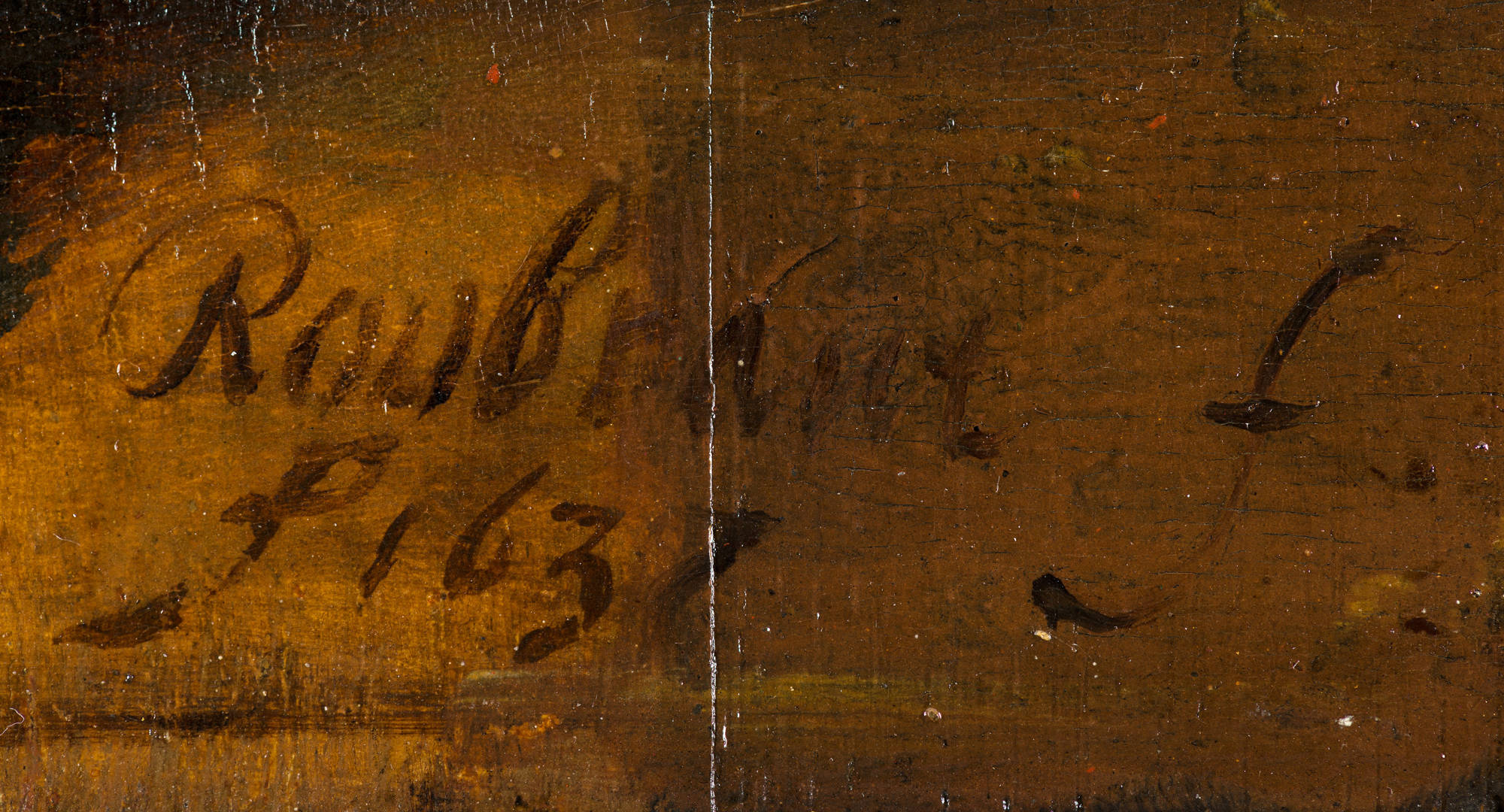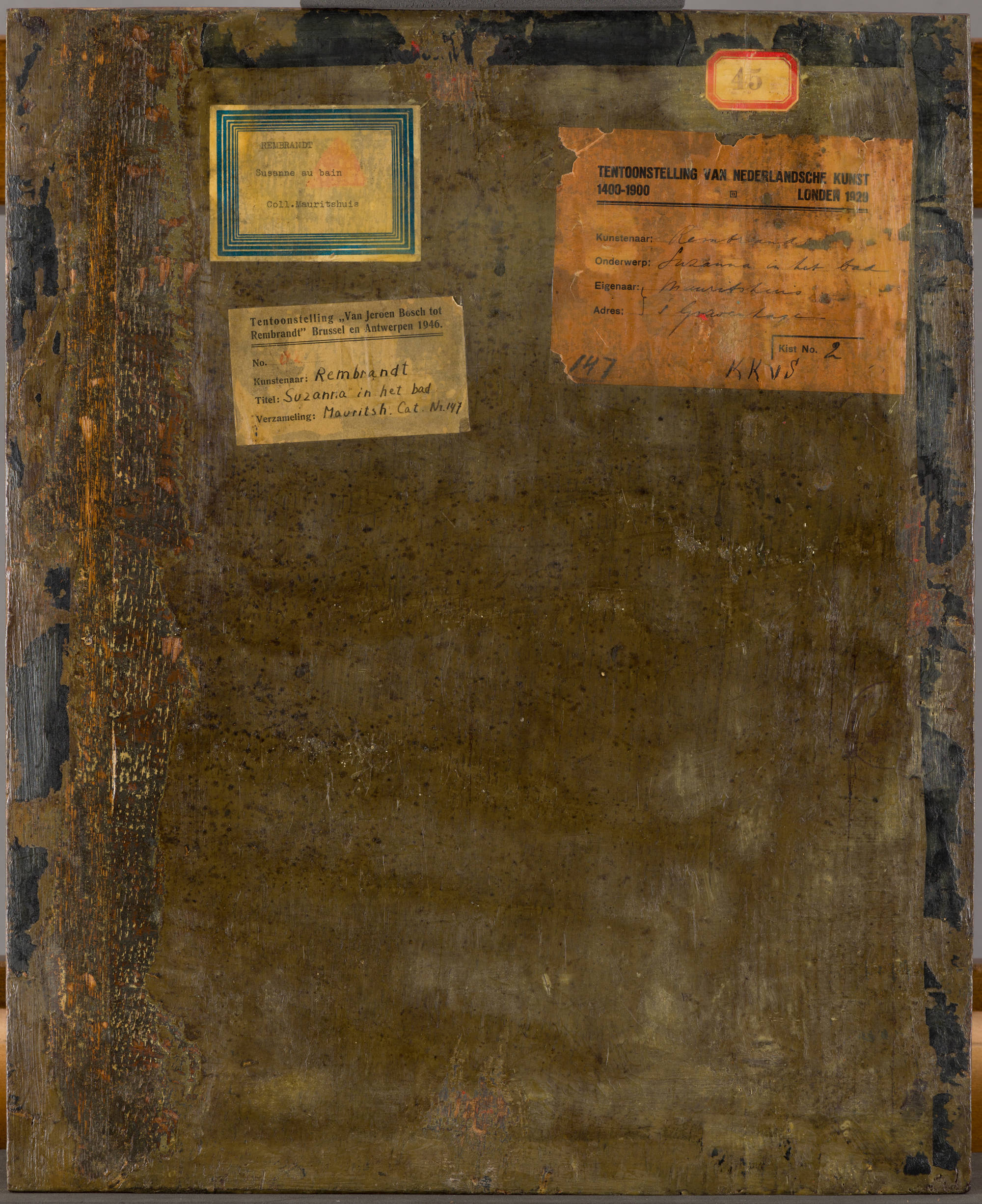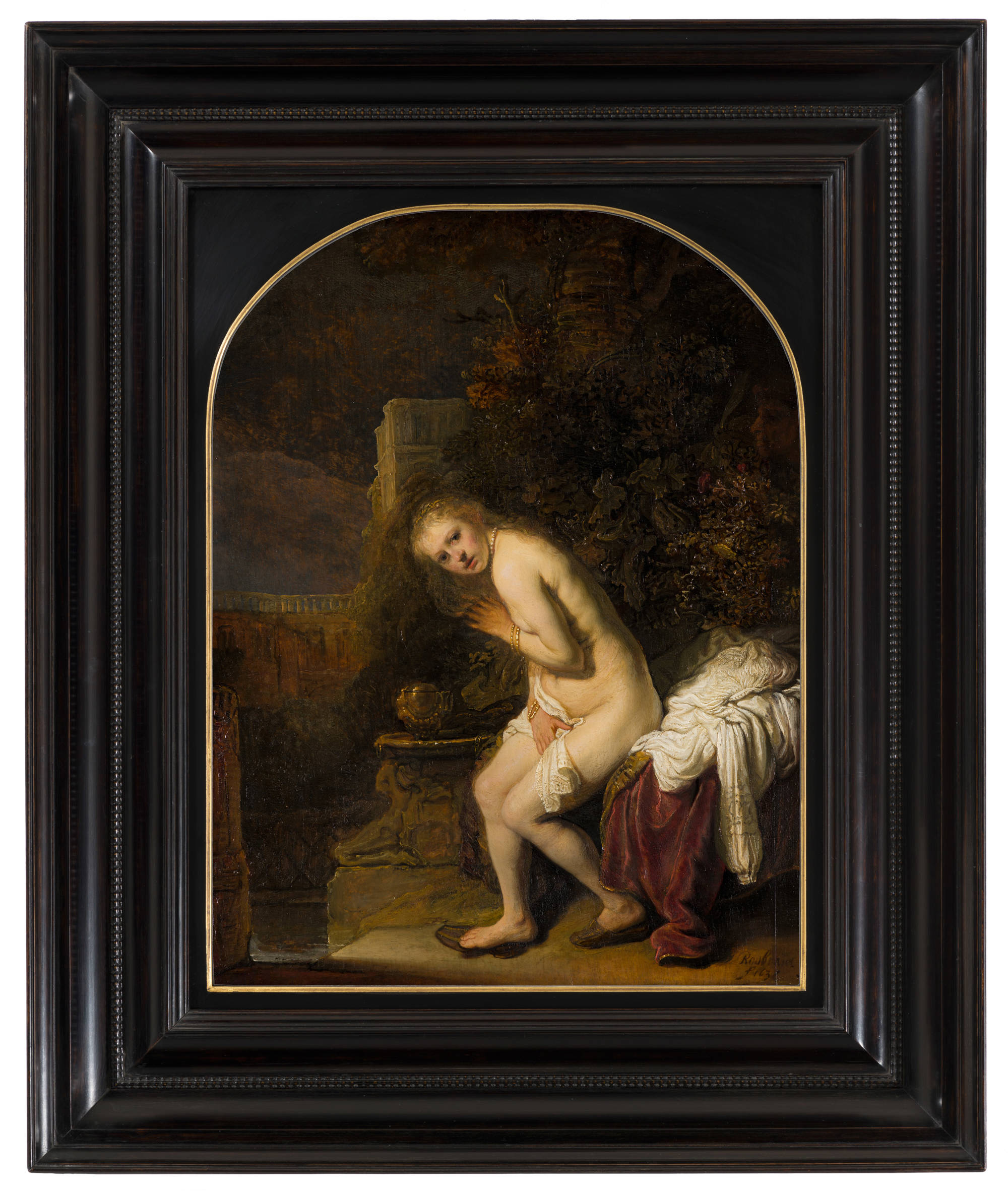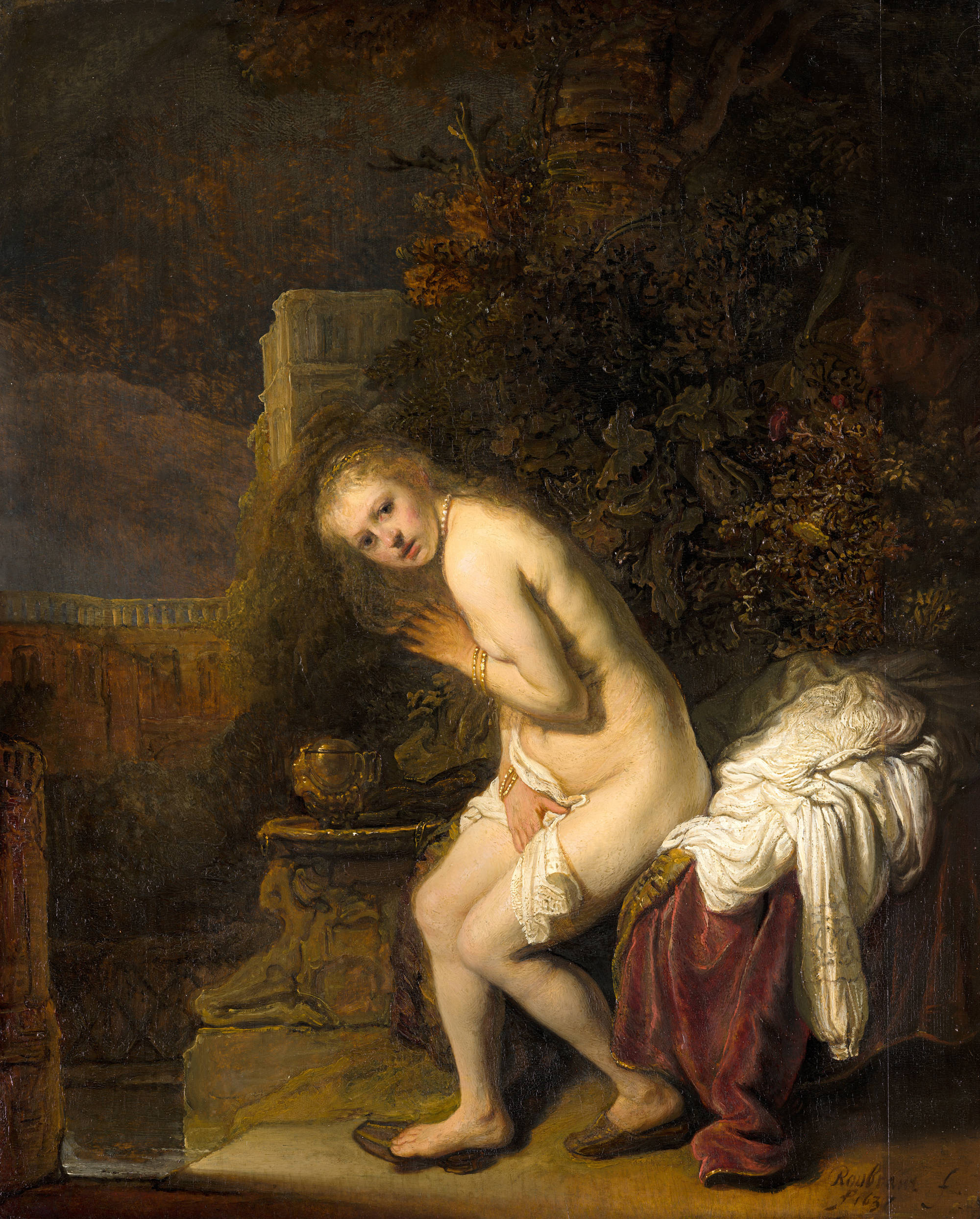Susanna was the pious wife of a rich man from Babylon. She bathed regularly in a pool in the lovely garden near her home. According to the apocryphal biblical story, two elders concealed themselves in her garden one day to spy on her while she was bathing. They tried to seduce her, threatening to spread slanderous tales about her if she repelled their advances. Susanna did not yield, however (Daniel 13:19-23). Rembrandt has chosen the moment at which the men speak to Susanna. She hears but does not see her assailants, and reels in horror at their dishonourable proposal. She displays her modesty and revulsion by holding her left hand against her breast and placing her other hand in her lap. Women’s shame has been depicted in this manner ever since the ancient Venus Pudica (fourth century BC). All we see of the old men hidden in the bushes on the right is the face of one and a glimpse of the other’s turban.
Rembrandt had an immediate example at his disposal – a painting of the same subject by his one-time teacher Pieter Lastman (Berlin, Gemäldegalerie). But Lastman had chosen a horizontal format; what is more, he had depicted the elders in full length, and shown Susanna making a rather vague gesture of protest. In contrast, Rembrandt has adopted a vertical format and banished the elders to the wings. As a result, all attention is focused on the female figure, whose stooping posture and gestures are attempts to conceal her nudity. These interventions enhance the dramatic impact of the image.
Technical examination of the painting has revealed that the top of the composition was originally semicircular. At some point in time, probably in the first half of the eighteenth century, a strip some two centimetres wide was evidently sawn off the panel because it had been attacked by woodworm. This explains why so little can be seen of the two elders. A new four-centimetre strip was then added and painted, on which occasion the upper corners of the rectangular panel, which Rembrandt had left blank, were also painted. After extensive restoration in 2003, it was decided to give the painting a frame with an arched upper section, doing more justice to Rembrandt’s original composition.
The unadorned rendering of the female nude has provoked some notable reactions over the centuries. The English painter Sir Joshua Reynolds, for instance, who saw the painting in Prince William V’s art gallery in 1781, wrote: ‘It appears very extraordinary that Rembrandt should have taken so much pains, and have made at last so very ugly and ill-favoured a figure; but his attention was principally directed to the colouring and effect, in which it must be acknowledged he has attained the highest degree of excellence’. Reynolds’s conception of ideal female beauty still breathed the spirit of the classicists, who rejected Rembrandt’s uncompromising imitation of nature from the outset. As a painter, however, he proved receptive to Rembrandt’s warm colours and subtle light effects.
(this is a reworked version of a text published in in: P. van der Ploeg, Q. Buvelot, Royal Picture Gallery Mauritshuis: A princely collection, The Hague 2005, p. 150)








